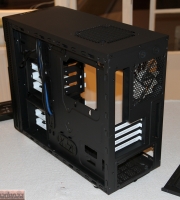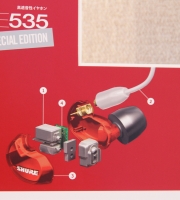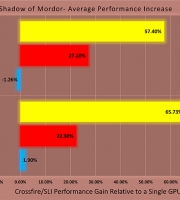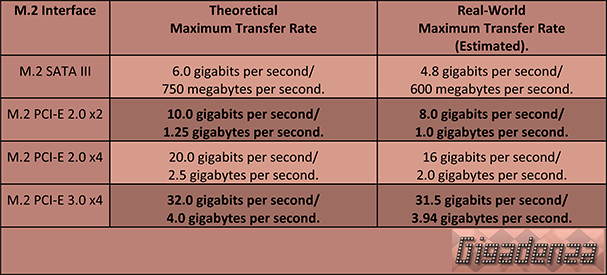


MSI X99s Gaming 9 AC
This imperious Hawell-E initiator was one of MSI’s finest feats
It’s partner in priming, the X99s XPower AC, was touted as the over-clockers saviour, and boasted a stronger PCB, voltage checkpoints and extra durable capacitors though to the eye, save for yellow trim and a lack of EMI shielding, it was identical.
As the name implies, the Gaming AC was intensely targeted at steamers and streamers. Its defining traits were an integrated Avermedia H.264 hardware encoder, compatible with XSPlit’s broadcasting software and, like the Live Gamer HD, capable of monitoring footage at 60 fps and capturing at 30 fps, with a resolution of 1080p in each case.
To exploding communities of gamers and let’s players seeking a superior means of sharing their toils and triumphs, this trimming was exceptionally appealing. Software based recorders such as FRAPS, DXSTORY and Bandicam had long dominated frame grabbing culture and despite they’re modest prices, all racked up hidden costs by relying on meaty CPUs and several dedicated hard drives to achieve acceptable results.
In contrast, hardware equivalents – read about some here – consumed valuable space and necessitating the graphics card’s signal to be previewed and captured externally. HDMI or DVI splitters were also recommended if one sought to avoid refresh rate anomalies.
MSI’s integral solution was the first to combine spacial practicality with quality and efficiency. Or was it? What of Nvidia’s Shadowplay? How about AMD’s GVR? Both of these were driver supplements and tapped the talents of the GPU, whose native encoding facilities were a virtual formality and provided definition inferior to none. Too little too late MSI?
The board’s built-in audio facilities were finely engineered, with gold plated connectors and a hefty guard concealing the chipset to prevent interference from nearby components. Did they steal this concept from Asus?
Sigh, its happening again, wretched language. I feel like Blackadder rewriting Dr Johnson’s dictionary, him stranded on Aardvark, myself on motherboard one. Let us proceed with simplicity.
The usual stocking fillers. OC Genie, click BIOS, OC essentials and Guard Pro all expounded upon in devastating detail by the MSI themselves hence I shan’t rephrase abridge or promote.
USB Audio power. Optimally regulated the 5v signal transmitted to the board’s USB ports, guaranteeing external sound cards and DACs could attain the cleanest possible output. Hmm, I’d have thought the PSU played a bigger role here.
ASUS X99-E WS/ASUS Rampage V Extreme /MSI X99s Gaming AC/Gigabyte GA-X99 SOC Force.
All four of the above flaunted a single “Turbo” M.2 connector, known commonly as M.2 PCI-E Gen3 x4. This interface drew four third generation PCI-E lanes from the CPU’s generous consignment, providing a theoretical maximum transfer rate of 32 gbps, twice that of the protocol’s previous implementation, M2 PCI-E Gen 2 x4, but thankfully compatible with older M.2 PCI-E Gen 2 x2 SSDs such as Plextor’s M6e.
Goodness, if there was one piece of technology I felt couldn’t possibly present the customer with a more perplexing picture, it was this otherwise intriguing and agreeable form of data retention. So begins…
A Winter of Disk-content.
Every allusion and statistic adorning these pages serves to remind me as much as inform readers and when darting back and forth between the websites of these voracious vendors, it’s easy to see why. Grounds for costly confusion are revealed by the click.
Their insatiable compulsion to expound on progressively exhaustive lists of exclusivities, is the frequent cause of careless oversights or conveniently misleading specifications, while other vital information is lost in translation. To illustrate, here is one incorrigibly irritating case of conflicting claims.
The M.2 socket soldered to Gigabyte’s garish ensemble was an enigma, examine the following nugget of promotional naffness, duly nipped from the motherboard’s microsite…
“Turbo M.2 Technology Fast Onboard Storage”
GIGABYTE X99 SOC motherboards feature a Turbo M.2 socket to provide compact connectivity for SSD devices. Thanks to the unique design from the X99 chipset, 4 PCIe (Gen.2) lanes can be allocated to the M.2 socket, unlocking up to 20 Gb/s of bandwidth. Turbo M.2 offers considerably faster storage performance than current mSATA and even SATA Revision 3 (6Gb/s) storage devices.”
OK, got that? And here is what MSI had to say about the same feature
“Push your SSD even harder with Turbo M.2”
Push your SSD even harder with Turbo M.2 Delivering speeds up to 32Gb/s using Gen3 x4. Turbo M.2 is the successor to M.2 10 Gb/s, offering 3 times greater performance up to 32 Gb/s using Gen3 x4. M.2 is packed in a small form factor and is compatible with 3 different sizes to fit most storage solutions. All latest generation Intel based MSI motherboards feature Turbo M.2 storage.”
So which is correct? is it 20 or 32Gb/s? Is it four GEN2 or GEN3 Lanes? Is it gigabits per second or gigabytes? I speak in earnest when declaring that half an hour of Googling was essential to unearth the answers.
First, to help refine what suited statisticians rejoiced in obfuscating, I must nestle some cute table candy right here,

Oh! The relief! Open your eyes, gratify yourself with that glorious clarity. Delight in data that could be used to recoup decades of errors and prevent centuries of forum warfare. There are moments when I feel my entire life could be recounted through tables. So what was Gigabyte’s game? Why did they imply the X99 can only call on Gen2 PCI-E lanes for M.2 mobility and not as MSI informs, GEN3. As it turns out, both impart the truth, though one version is slightly crafty.
Gigabyte chose to exploit a concept first paraded on Intel’s z-87, which furnishes manufacturers with eight bonus Gen2 lanes from the PCH, to deploy to slots, sockets and ports at their discretion. It was christened “FLEX i/o”, and despite no official acknowledgement, remained an active element in the x99s design.
Meanwhile, MSI elected to assign four GEN3 lanes directly from the CPU, the preferred method of implementing M.2 on the x99, and thus, the stated maximum speeds differed. Ah! Praise IT, a world where facts are as solid as sand and figures as clear as clay. Let’s move on.